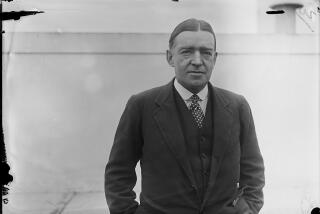Dodging Dangers of the Deep : Ships’ Captains Risk Uncharted Hazards
- Share via
ABOARD THE R/V POLAR DUKE, Antarctica — Ship captain Grant Philpott says a chill runs through him every time he passes Sail Rock.
The 91-foot pinnacle rises out of waters 700 feet deep like a sailor’s bad dream.
“You get to wondering how many (others) are lying just under the water,” Philpott said.
According to Antarctic sea charts, plenty of them are on the jagged bottom at Sail Rock near Deception Island, ready to rip through the strongest of hulls like the reinforced one of the Polar Duke, a modern U.S. research ship.
But even the charts can’t be trusted. They are loaded with hazards marked “PA” (position approximate) and “ED” (existence doubtful). Some areas have never been sounded.
“There’s a lot of old data being used,” Philpott said.
Throw in roving icebergs as tall as high-rise buildings and sudden storms with winds up to 90 knots or more, and you’ve got a place where even the best-run ship may well bump into something sooner or later.
The 219-foot Polar Duke has state-of-the-art navigational equipment, including two radars, two depth sounders and a site-scan sonar. Nonetheless, it ran into uncharted shoals two years ago and put a $1-million dent in the hull.
A British icebreaker, the Endurance, hit an iceberg earlier this year and still had a patched hull when it came to the assistance of a grounded Peruvian research ship, the Humboldt, in late February.
Philpott said he “grew up on the ice” of his native Newfoundland in Canada and has navigated in Antarctica since 1985. Experience is essential, he said.
But the increasing number of ships plying the Antarctic coast is raising questions about the judgment of some crews. When the Argentine research vessel Bahia Paraiso wrecked on shoals Jan. 28, it was attempting to cruise through an area marked on sea charts with the warning: “Dangerous Ledges and Pinnacles.”
Once upon a time, a ship in these waters sailed virtually alone.
On a recent 8,500-mile expedition, however, the Chilean ship Capitan Alcazar reported sighting 27 other vessels, including two private yachts and three tourist cruise ships, from a host of countries from Singapore to Spain.
More traffic is expected to produce more mishaps. But according to Philpott there is a saving grace: It also means more ships to come to your rescue.
“The biggest danger is the lack of other ships if you do get in trouble,” he said.
More to Read
Sign up for The Wild
We’ll help you find the best places to hike, bike and run, as well as the perfect silent spots for meditation and yoga.
You may occasionally receive promotional content from the Los Angeles Times.






